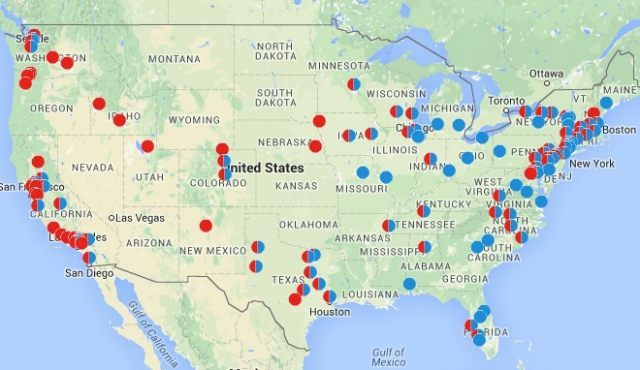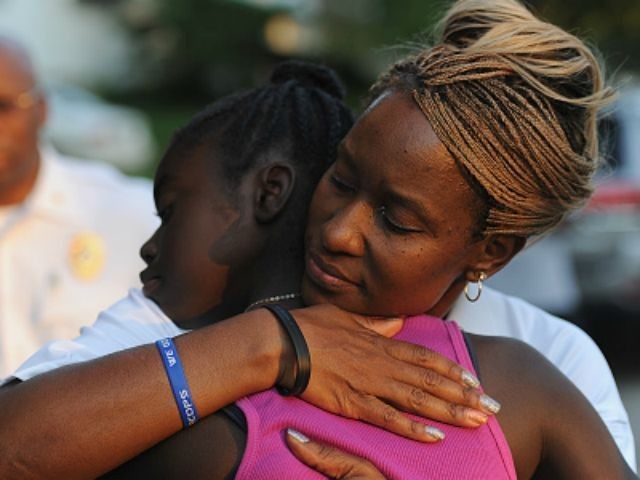Considering the massive amount of media attention the lack of black Oscar nominations is receiving, you would think the “Oscars So White” issue is the most consequential calamity facing black Americans since slavery.
It’s not. In fact, it’s far from that.
Certainly, social and economic anguish are not exclusive to any one ethnic group.
But below are seven devastating facts facing those black Americans who happen to not be the affluent entertainers currently bitching about not being validated by and receiving acceptance from a group of supposedly highbrow bigots.
1. By every economic measurement, black people are far worse off since President Obama took office.
There are more black Americans living in poverty today, 10.8 million at 26.2 percent, than there were in 2009, 25.8 percent, when President Obama took office.
A whopping 26.4 percent of black households receive food stamps assistance, despite the fact that black Americans constitute just 13 percent of the total population.
The economic reality for black children in America is far worse. Black children, under the age 18, made up 27 percent of the black population in 2014, but 38 percent of blacks in poverty.
2. America’s most dangerous cities have high black populations and are overwhelmingly run by Democrats.
In 2014, America’s most crime-ridden cities were run almost exclusively by Democratic mayors. Cities like Oakland, Detroit, Cleveland, and Baltimore are routinely plagued with violent illegality, are heavily populated by black people, and are often Democratic Party monopolies.
3. After 50 years of celebrating MLK’s civil rights legacy, black people now commit a catastrophically high amount of crime.
DOJ statistics show that between 1980 and 2008, black people committed 52 percent of homicides. And in 2013, black criminals committed 38 percent of the murders. Whites accounted for just 31 percent.
So how is it then that there are five times fewer black people than white people in America and, yet, we consistently carry out a larger share of the crimes?
4. In part because of wanton criminality, black people remain over-represented in America’s prisons.
Roughly 1 in 9 black children you pass on the street has or has had a parent in prison, according to a recent study by Maryland-based research firm Child Trends. About 1 in 10 black men are currently behind bars.
Black men are 6 times as likely as their white counterparts to be incarcerated, according to a 2013 Pew Research Center study.
5. If you are a black child in America, there’s a 30 percent chance that you will grow up without a father in the home.
And if you are fatherless and black, you are almost guaranteed to grow up poor.
This horrific phenomenon of fatherless, black households is the root cause behind so much of the economic stagnation in which many black Americans remain mired. The smallest increase in black marriages would help produce an economic dynamism for black people that would dramatically increase a black child’s chances of success at all stages of life.

Brookings
6. While there’s been marginal improvement in recent years, black people still overrepresent HIV/AIDs deaths and transmission.
The number of new cases of black women with HIV has dropped by 40 percent in recent years. But infection rates have seen a sharp increase among young gay men, especially blacks, according to the latest CDC figures. “Blacks account for more new HIV infections, people estimated to be living with HIV disease, and HIV-related deaths than any other racial/ethnic group in the U.S,” reports the Kaiser Family Foundation.
7. Abortion.
No one issue has brought more devastation to black Americans than abortion. Last August, I reported that pregnant-aged black women represent roughly 5 percent of the total U.S. population, but 35 percent of the abortions in 2010.
More from my August report:

Look again at the map above. Now consider the fact, according to the Centers for Disease Control data, that in 2010 “non-Hispanic white women and non-Hispanic black women accounted for the largest percentages of abortions (36.8% and 35.7%, respectively).”
Some math: Non-Hispanic white women account for about 38.5 percent of the population. I arrived at that number by cutting the number of all non-Hispanic whites in half. Using census and CDC data, that 38.5 percent of white women accounted for 36.8 percent of abortions in 2010.
Conversely, non-Hispanic black women make up about 6.6 percent of the population. That’s the black population divided by two. And, again, using census and CDC data, non-Hispanic black women accounted for 35.7 percent of the abortions performed in 2010.
Is that not a horrifically blatant disparity (especially considering less than that 6.6 percent consists of black women of actual childbearing age)?
Follow Jerome Hudson on Twitter @jeromeehudson.

COMMENTS
Please let us know if you're having issues with commenting.